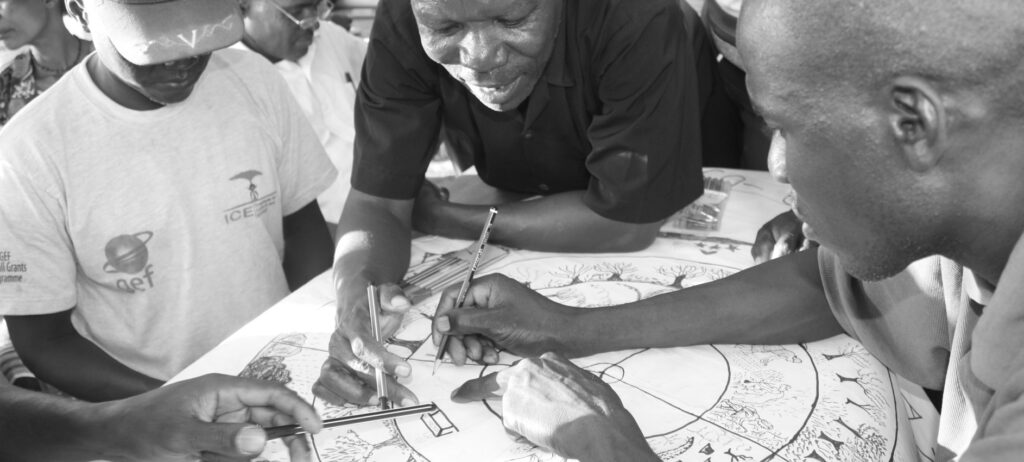Strategic Objective
To enhance environmental regeneration and sustainable use of 5 critical ecosystems in the target areas by December 2026.
This program seeks to restore ecosystem functioning and the provision of ecosystem services essential for human well-being. ICE aims to achieve this through promoting environmental awareness among communities; Training on indigenous tree seedling production; support rehabilitation of degraded ecosystems; Promotion of agro-forestry and sustainable use and conservation of natural resources; facilitating experiential learning and Community ecological mapping.
ICE will work with the local community conservation groups such as Self Help Groups, Community Forest Associations (CFAs) and custodians of sacred natural sites. ICE builds capacity of these community institutions to undertake sustainable management of forest resources. This goes a long way in conserving the forests to
continue providing ecosystem goods and services and conserve biodiversity. Traditional governance, institutions and knowledge systems are engaged in the management of natural resources such as natural forests, riverine ecosystems and conservation of biodiversity.
ICE also collaborates with national and county governments, government agencies, other like-minded CSOs in undertaking joint initiatives and lobbying in restoring functionality of natural resources.
ACHIEVEMENTS
- Over 60,000 trees planted to rehabilitate degraded forests and riverine ecosystems and in public and private land.
- Promoted protection of 500 ha of fragile ecosystems such as Kathita River, Athi River and sacred natural sites such as Lower Imenti Forest in Mount Kenya, Kivaa hill and Ntugi hill forests.
- 845 households acquired energy saving Jikos (stoves) hence reducing pressure on forest and other vegetation.
- Formation of 2 indigenous and community conserved areas (ICCAs) working groups.
- Documented community ecological customary laws for Tharaka and Kivaa sacred sites as well as documentation of the sacred sites for registration and protection in collaboration with the National Museums of Kenya.



